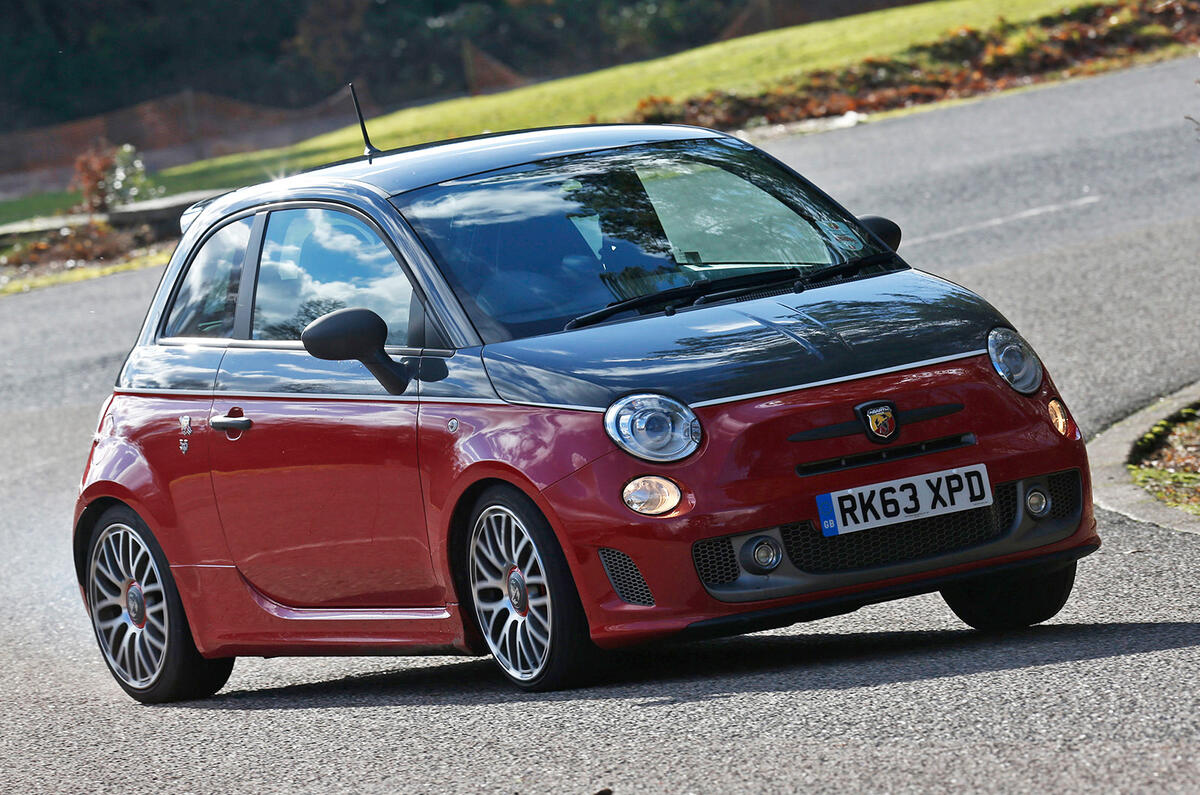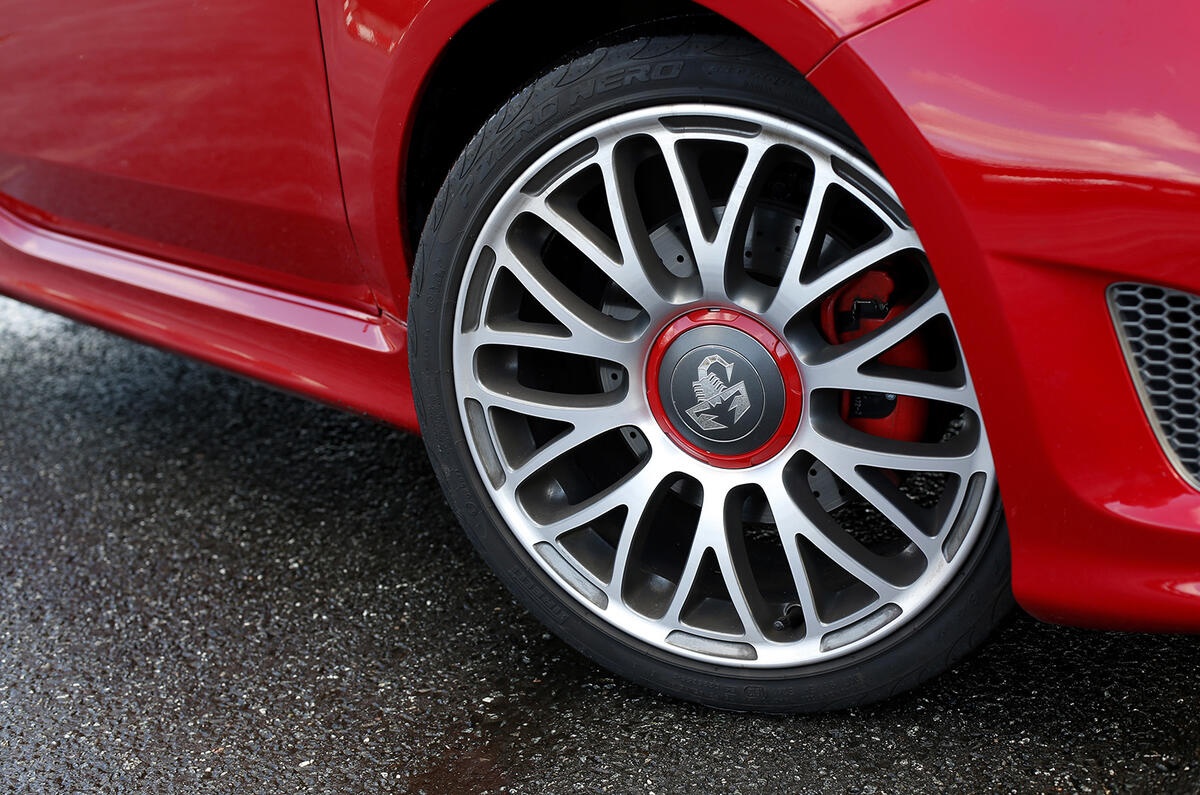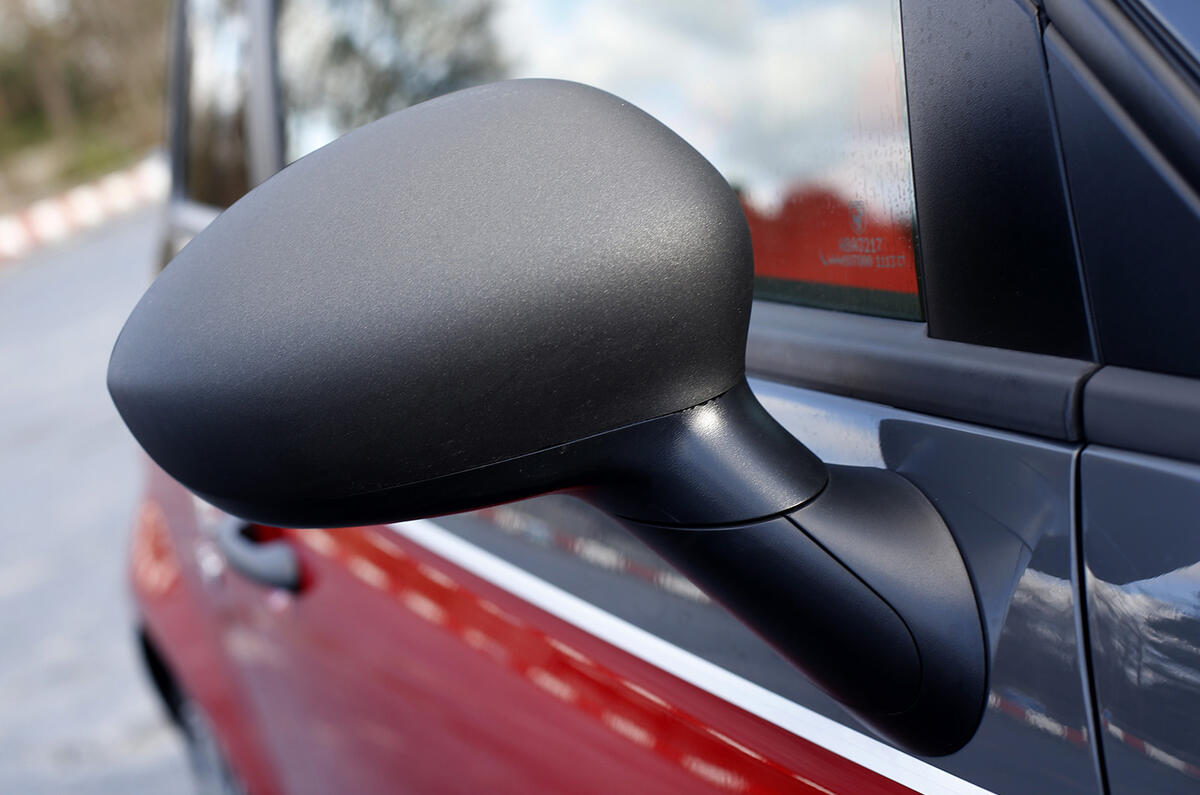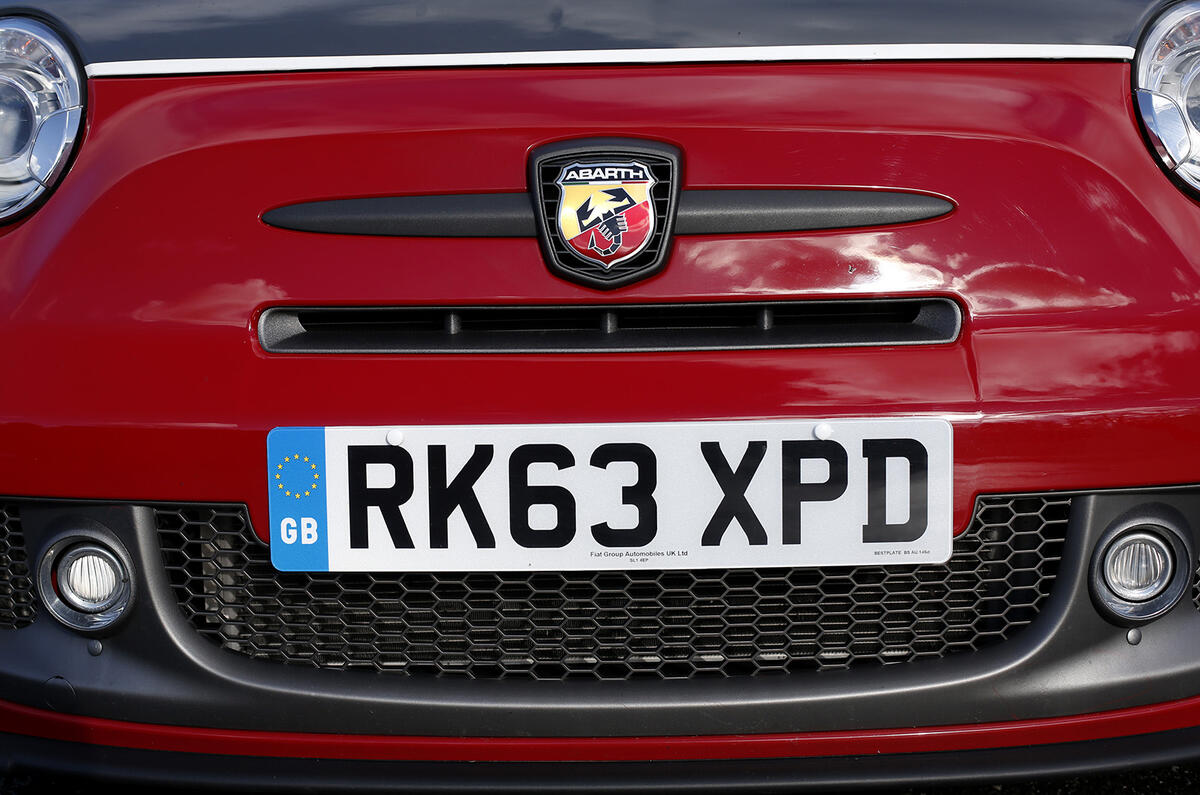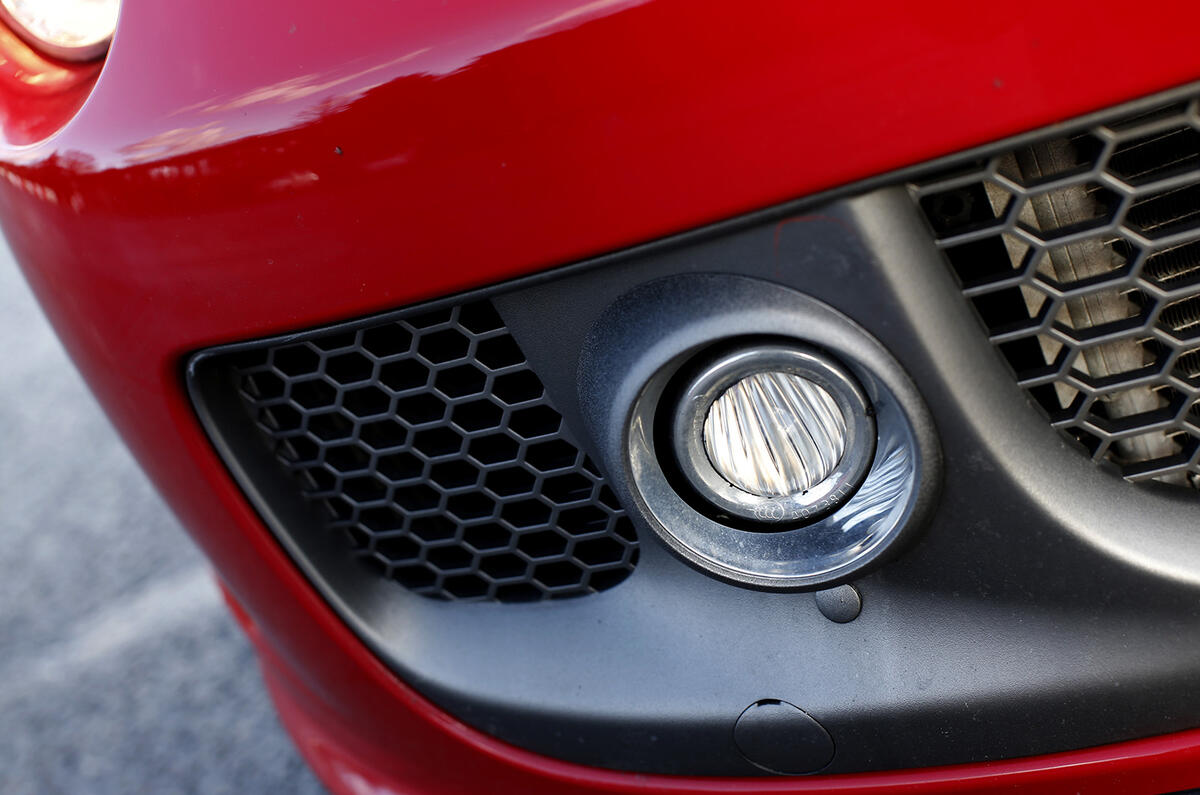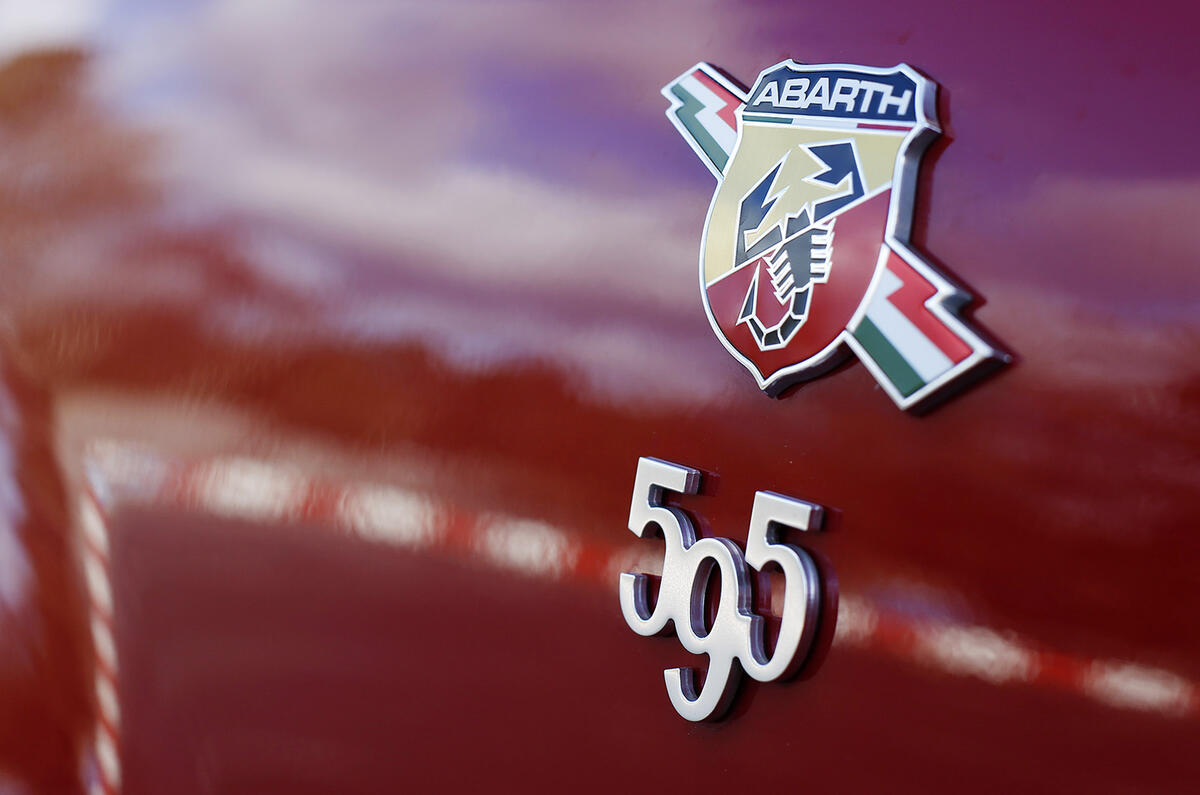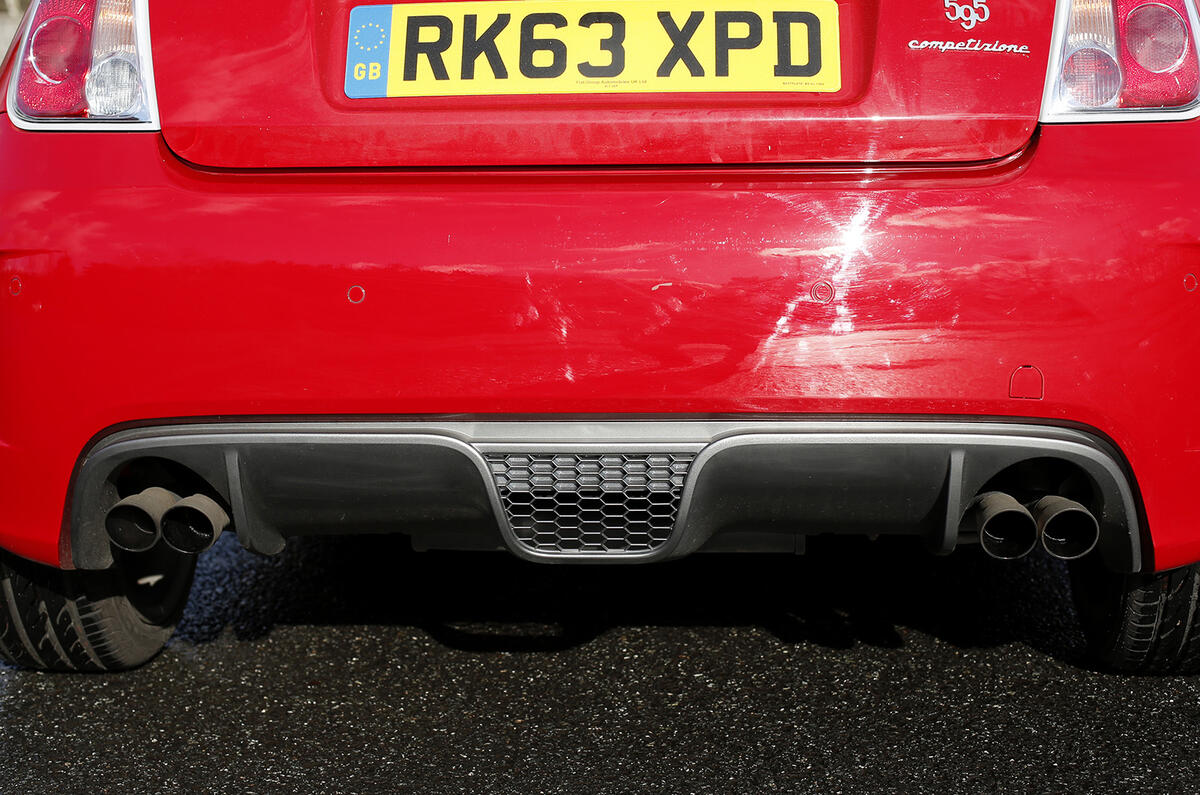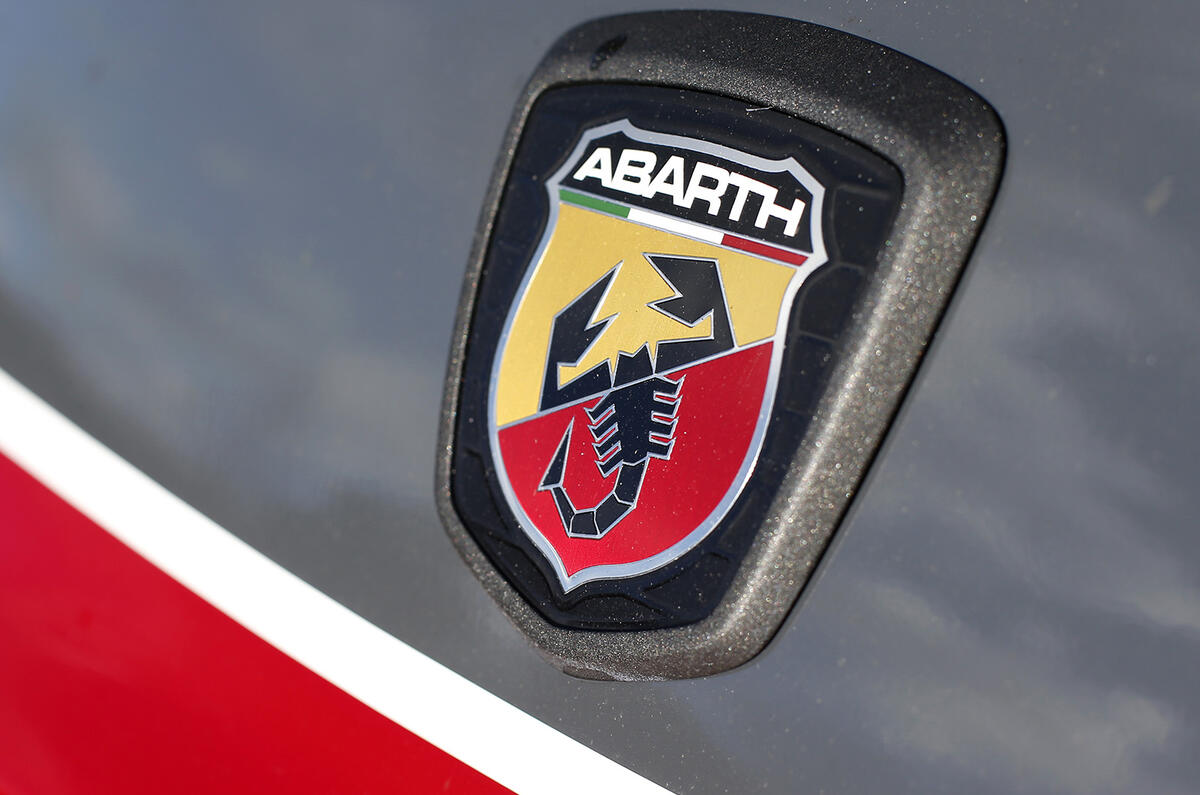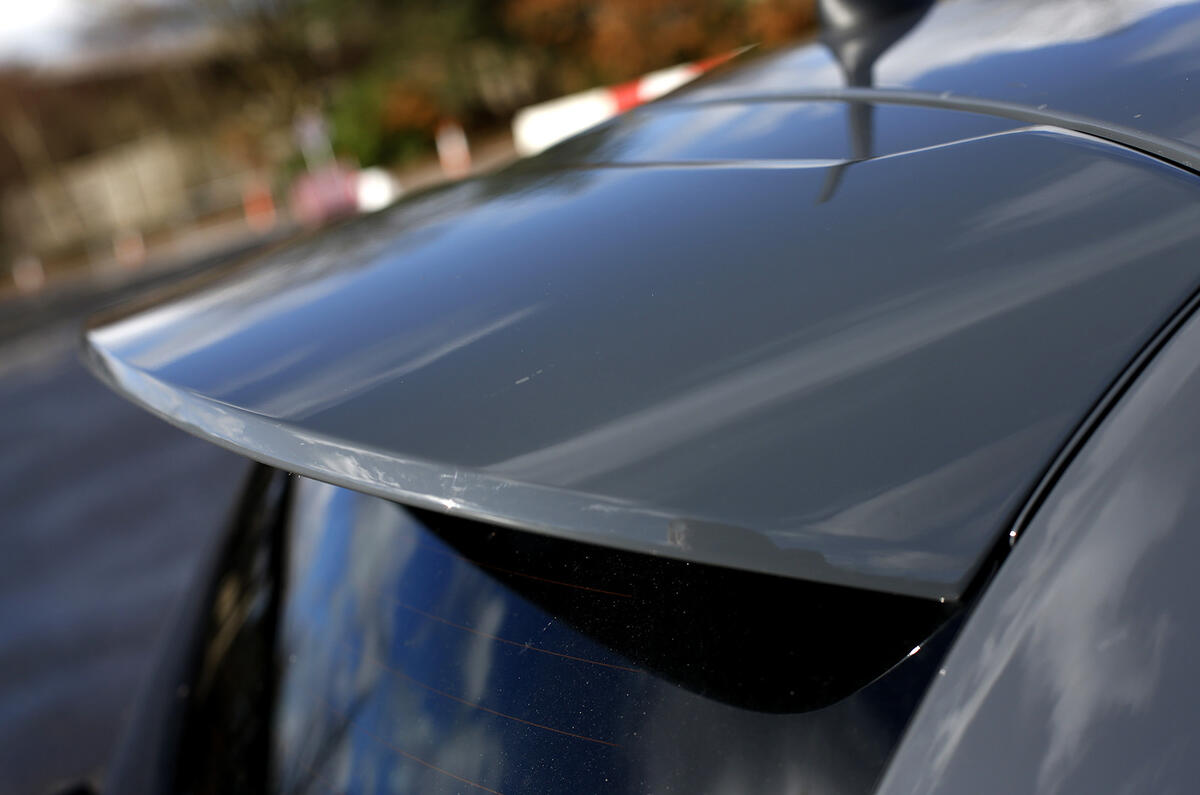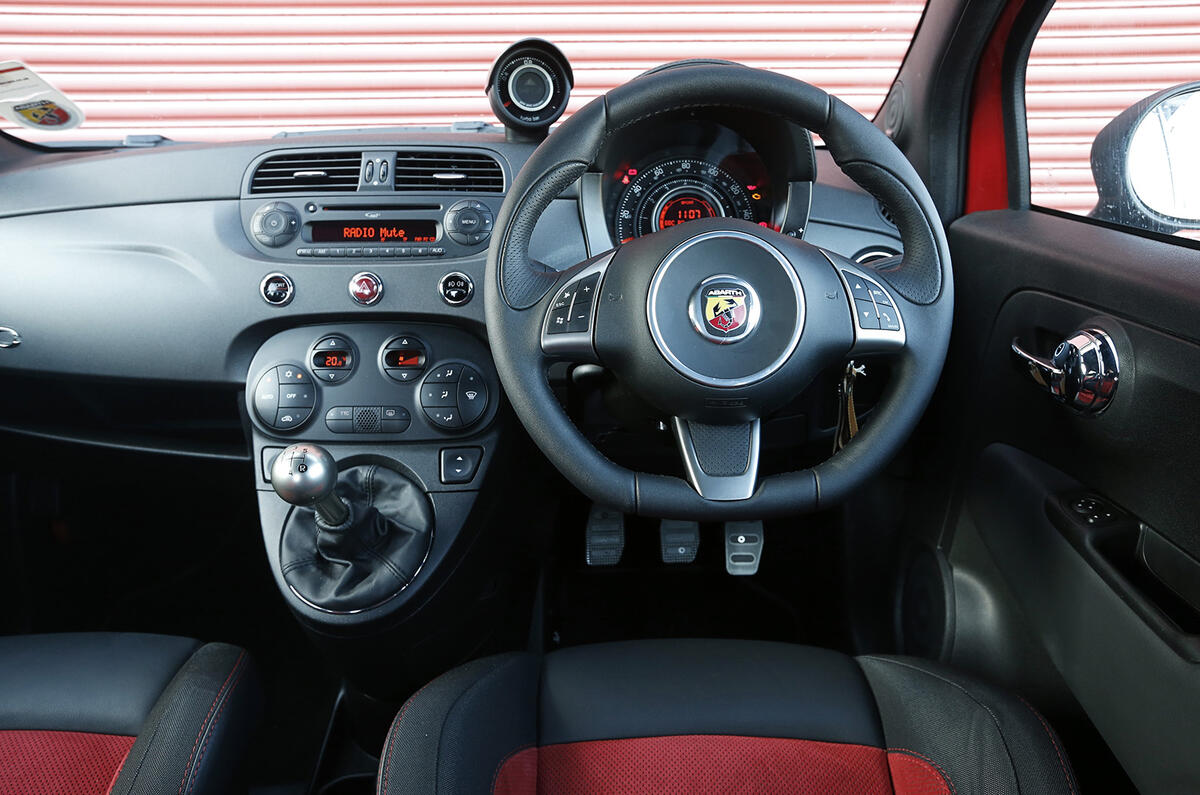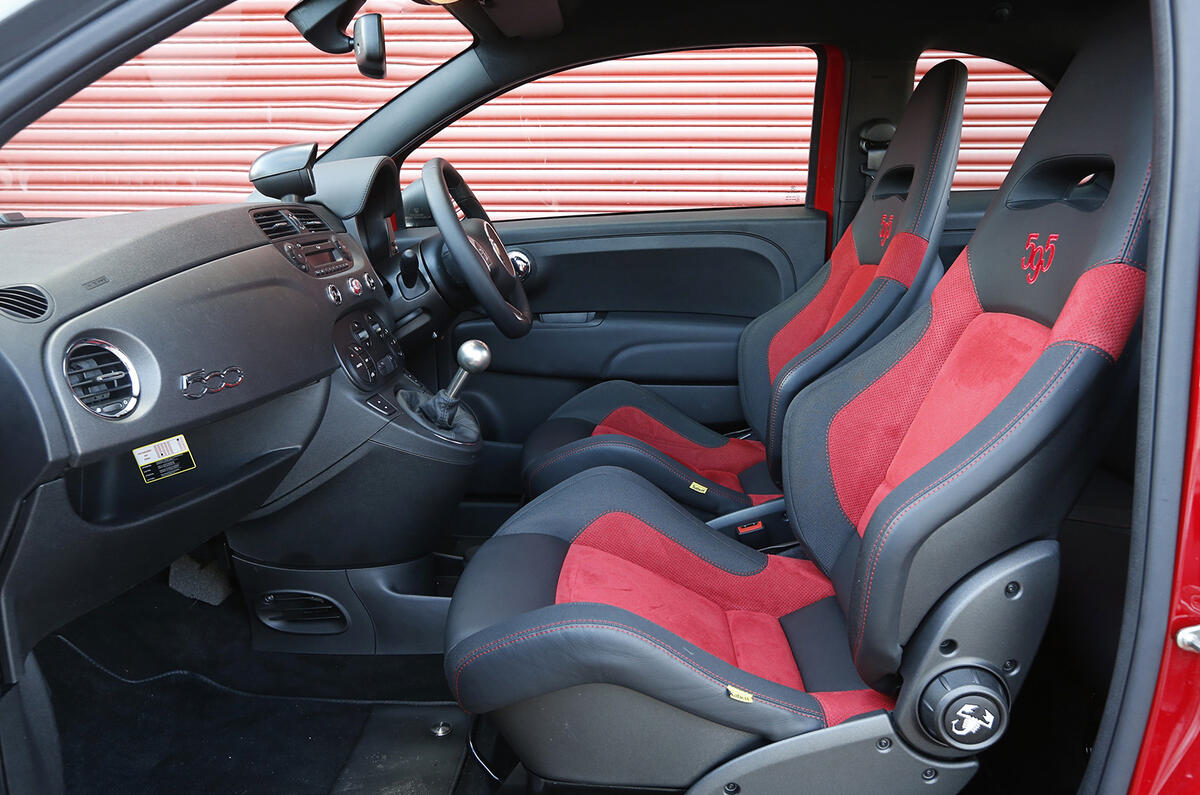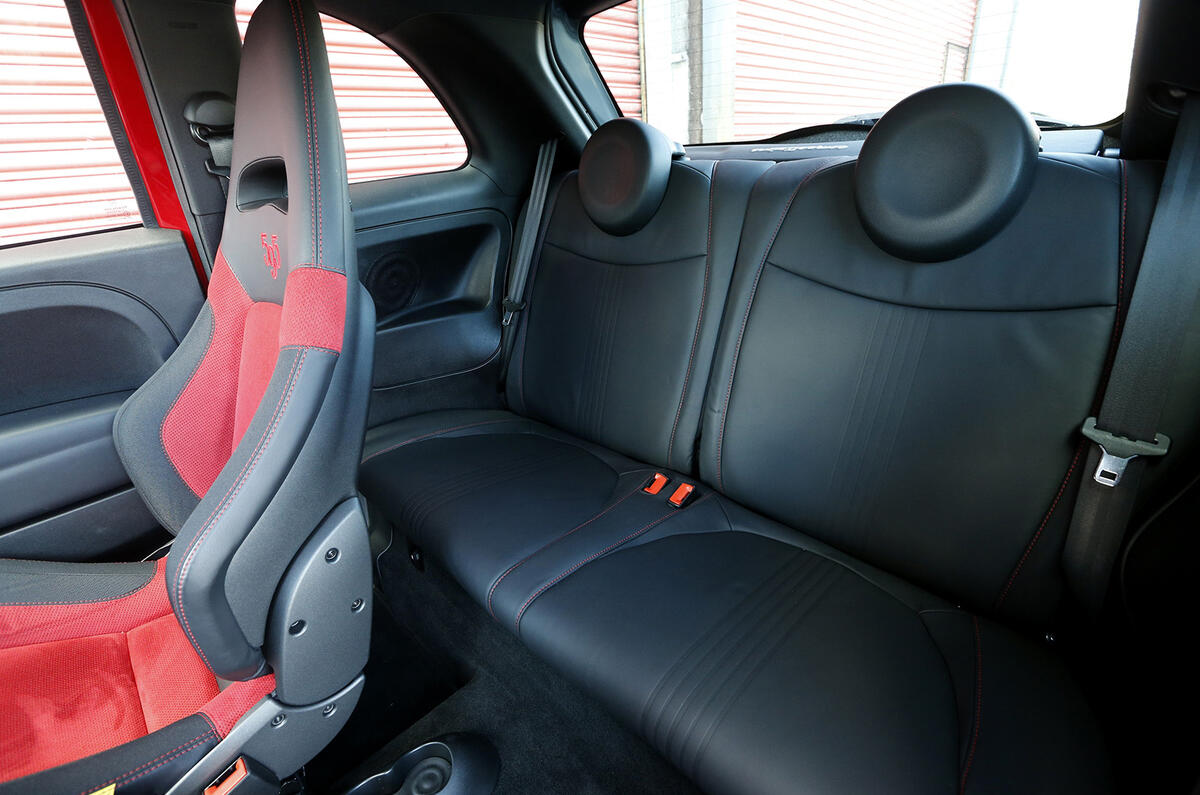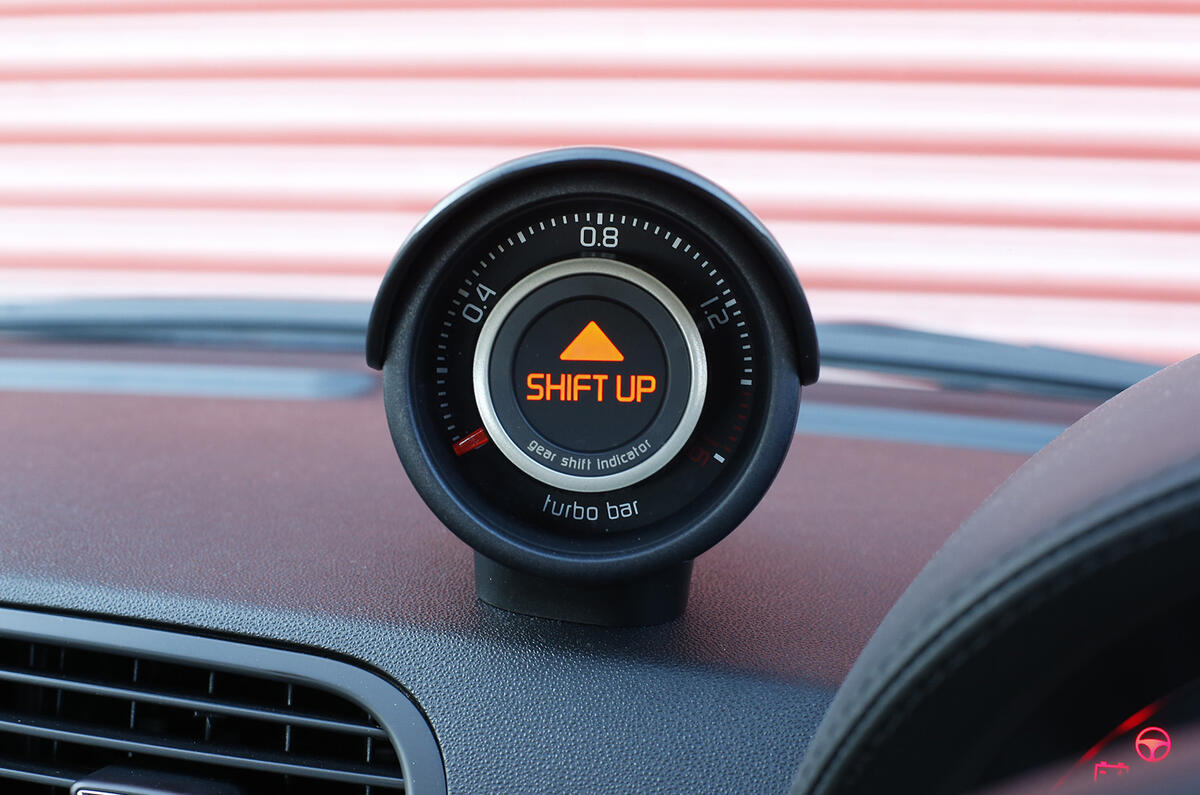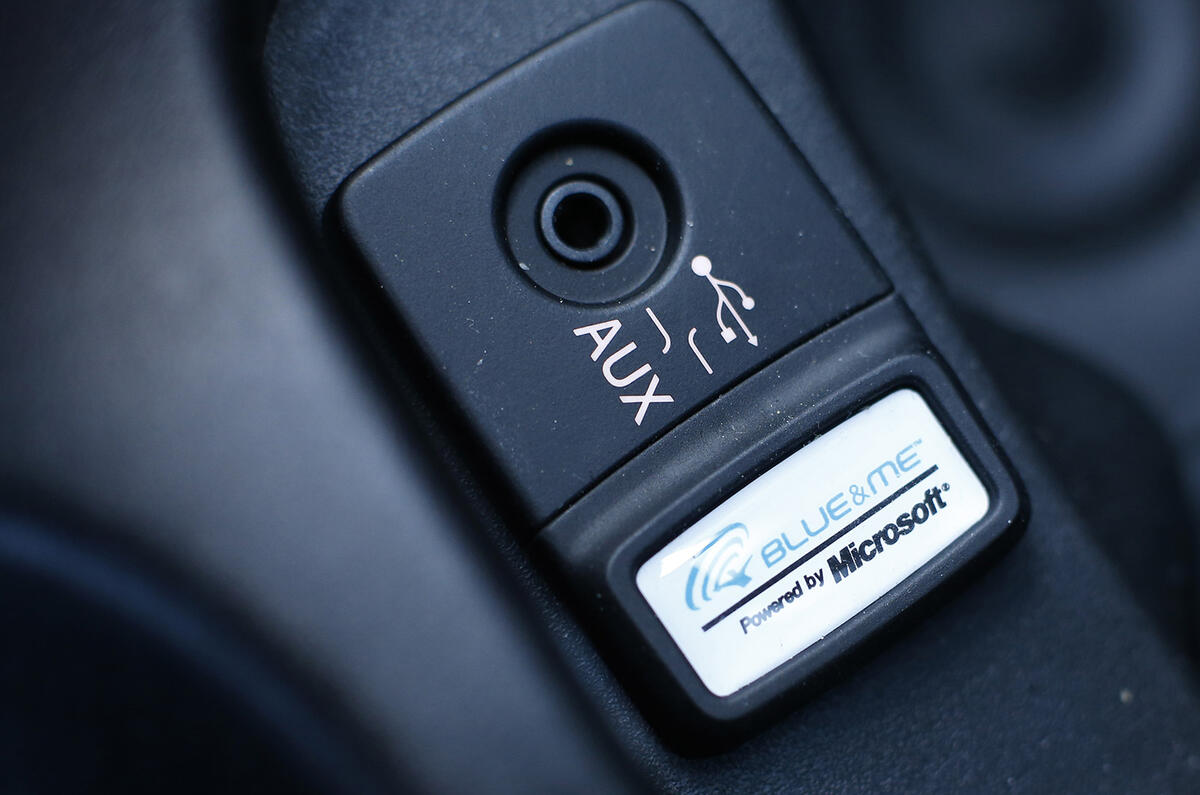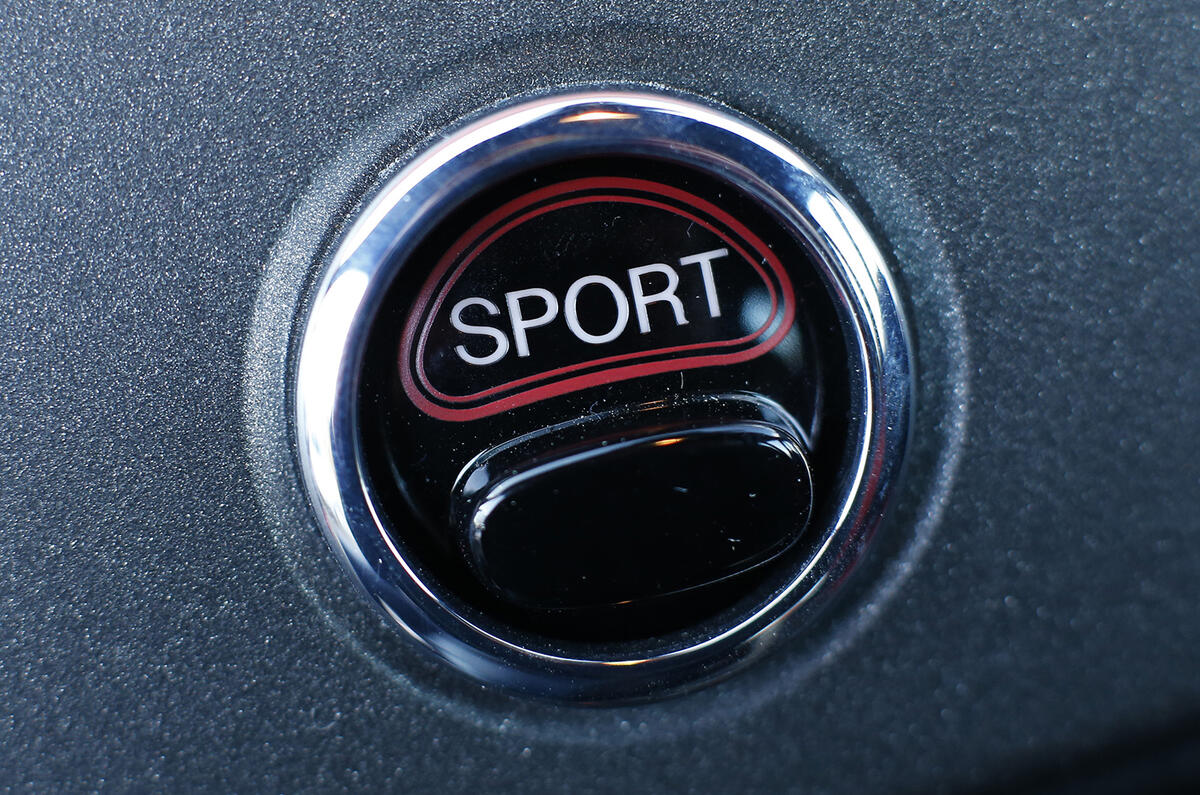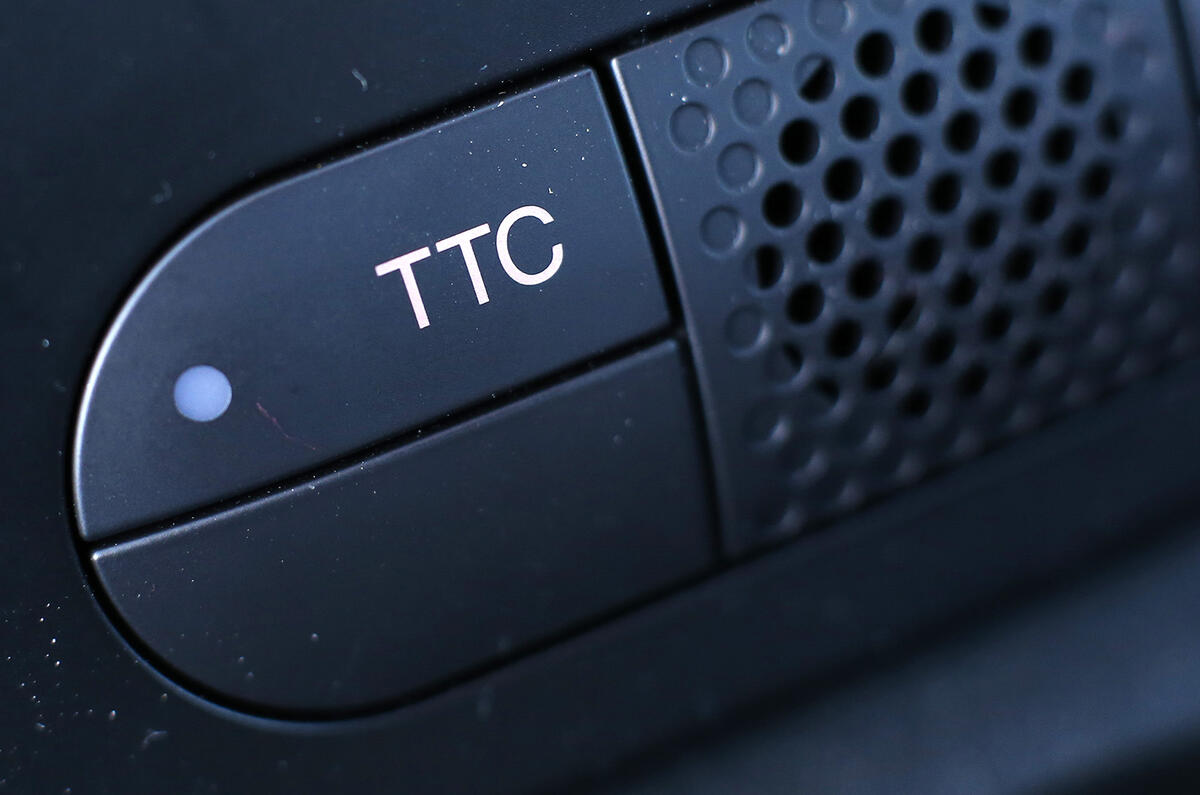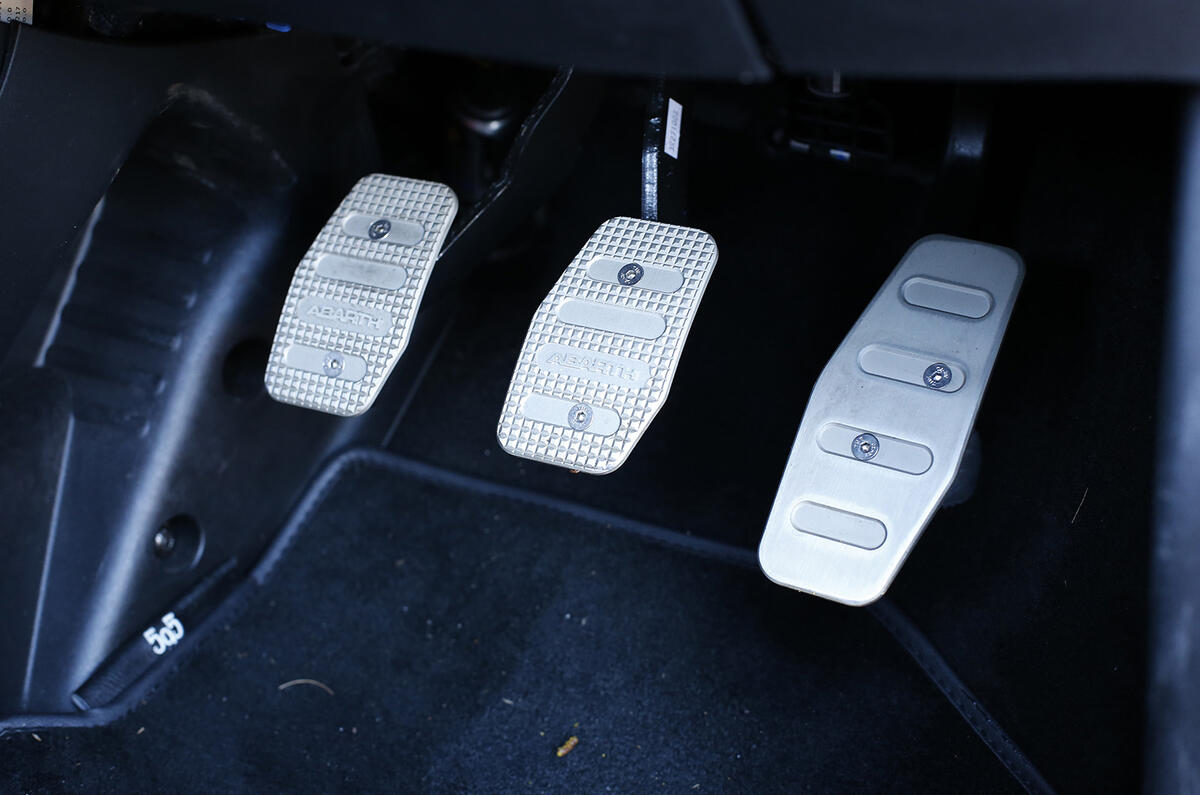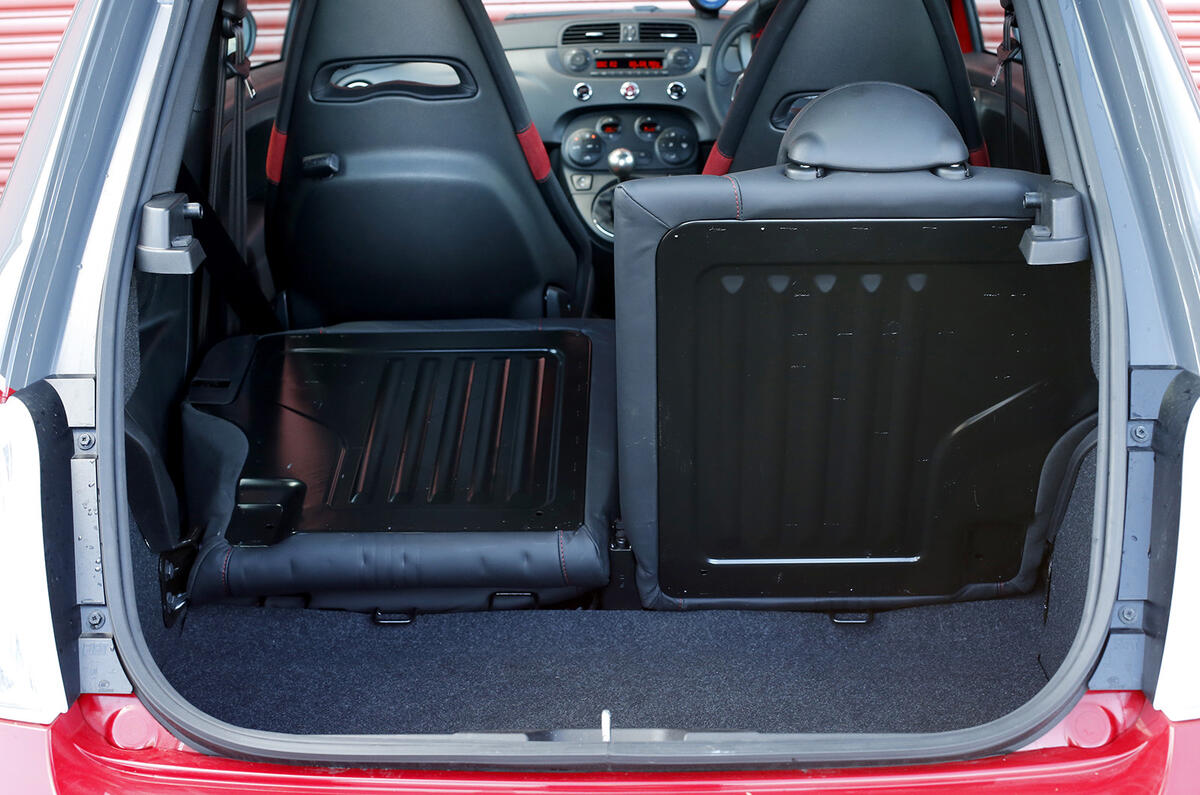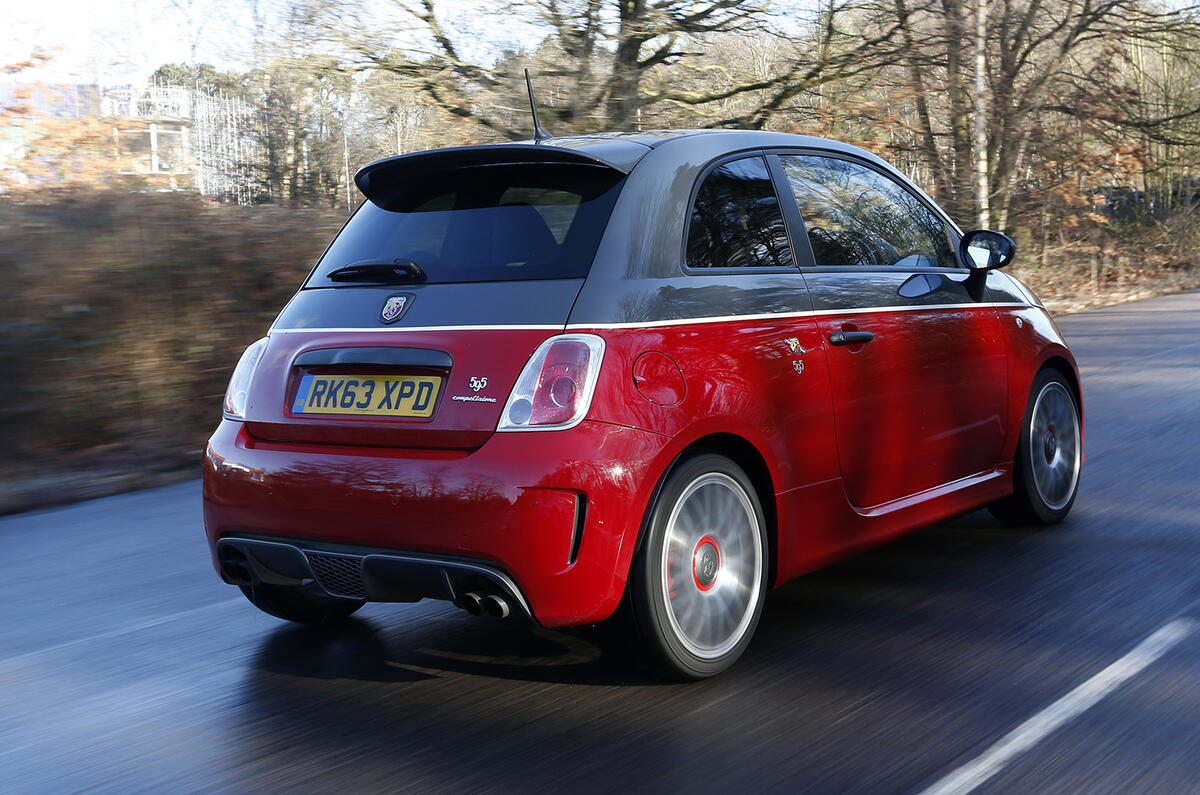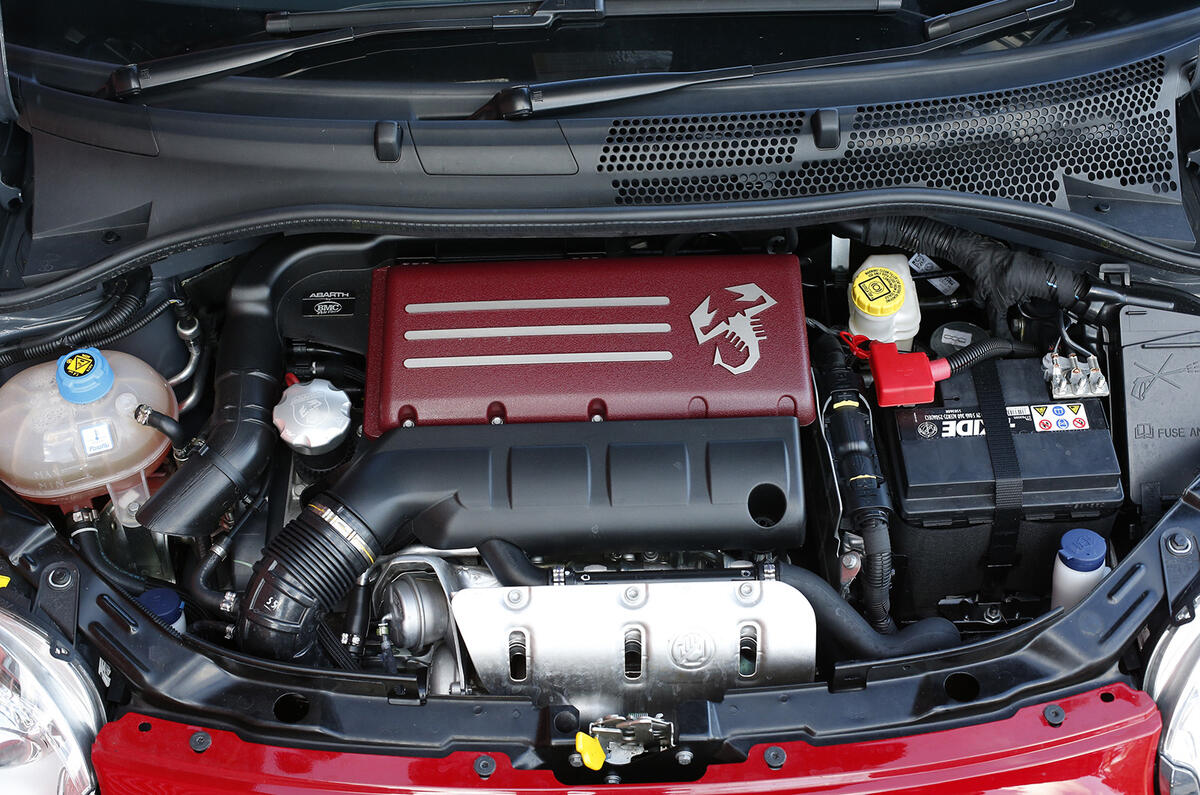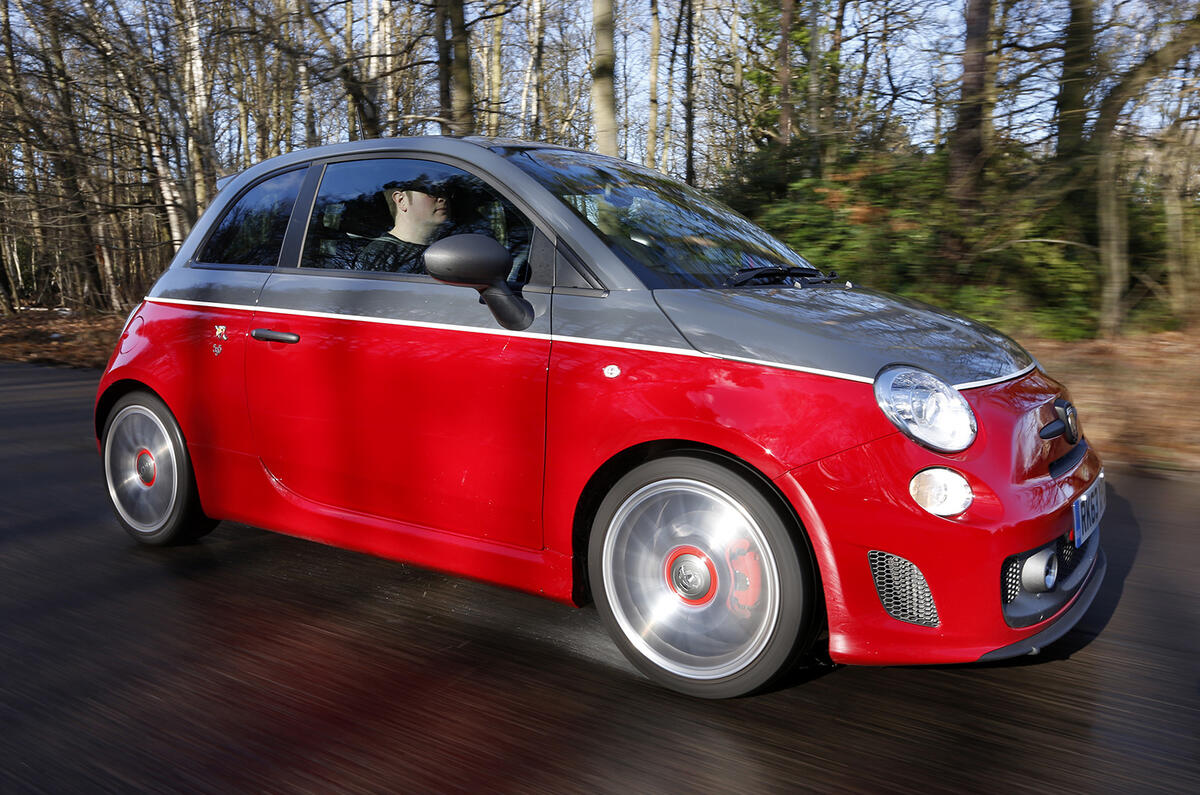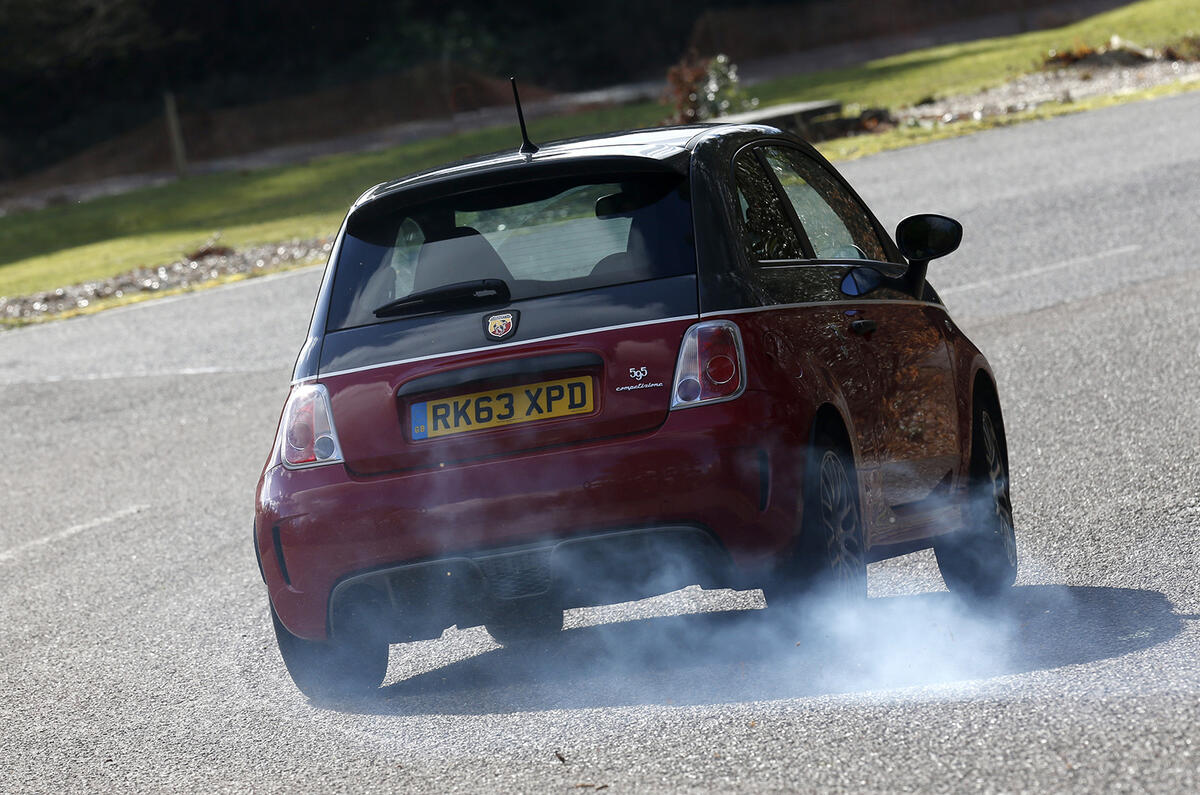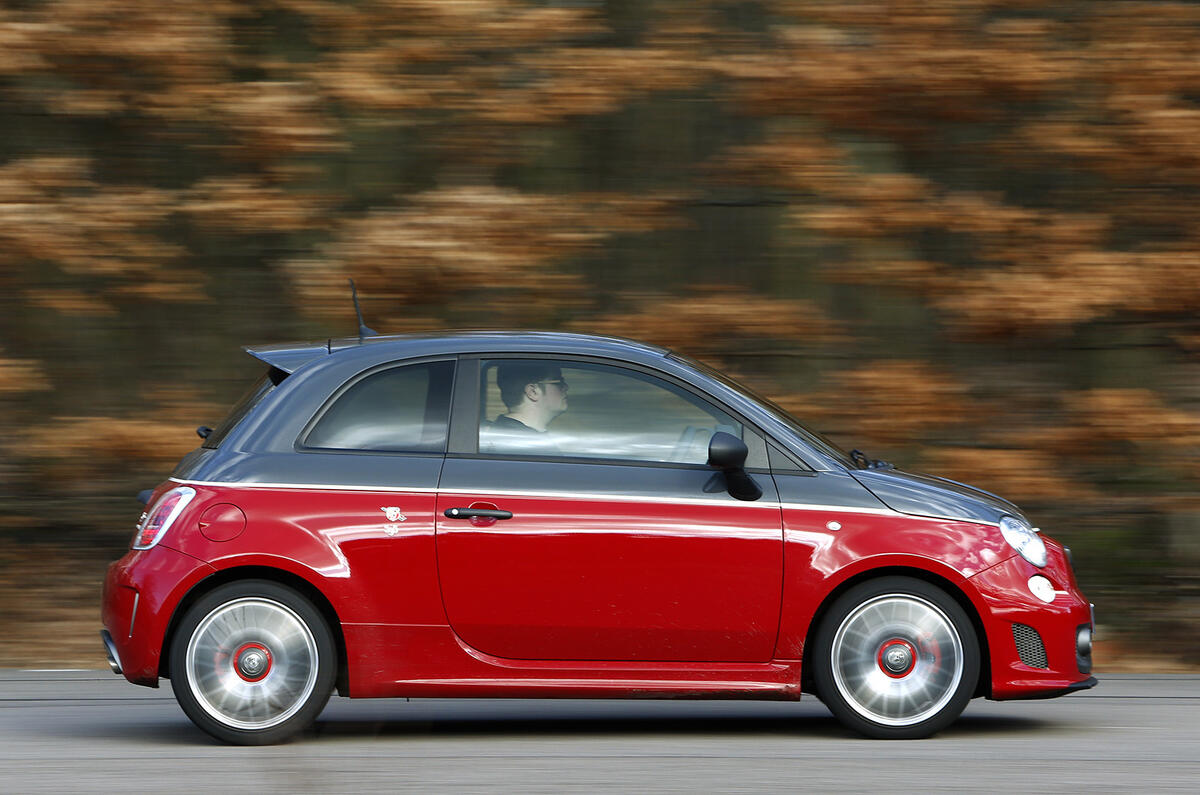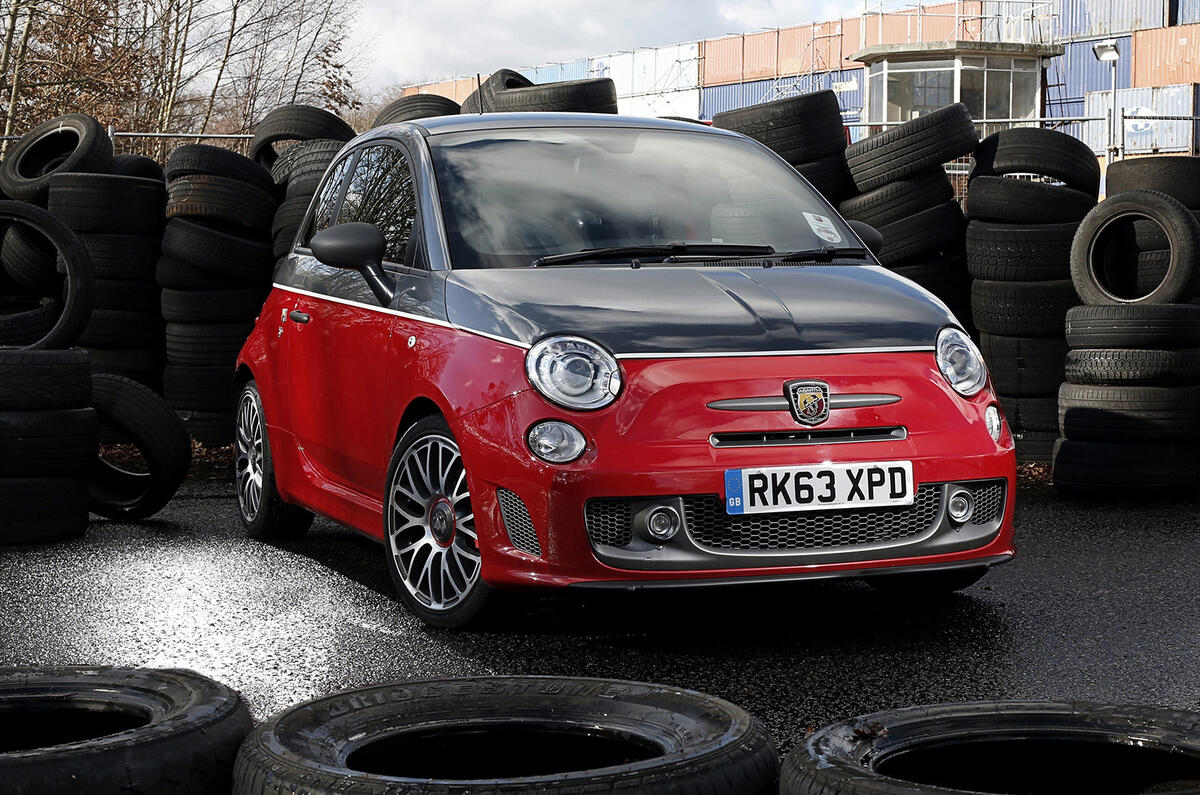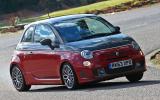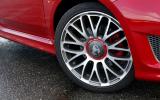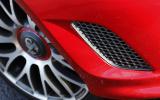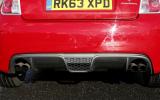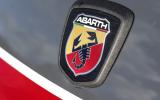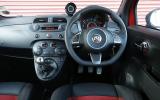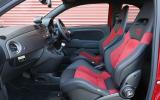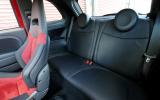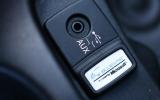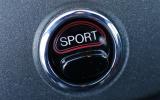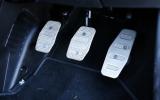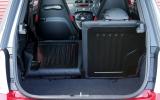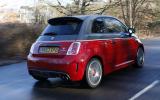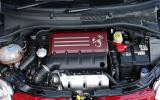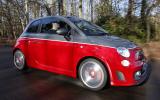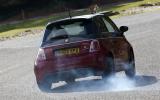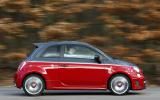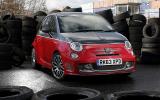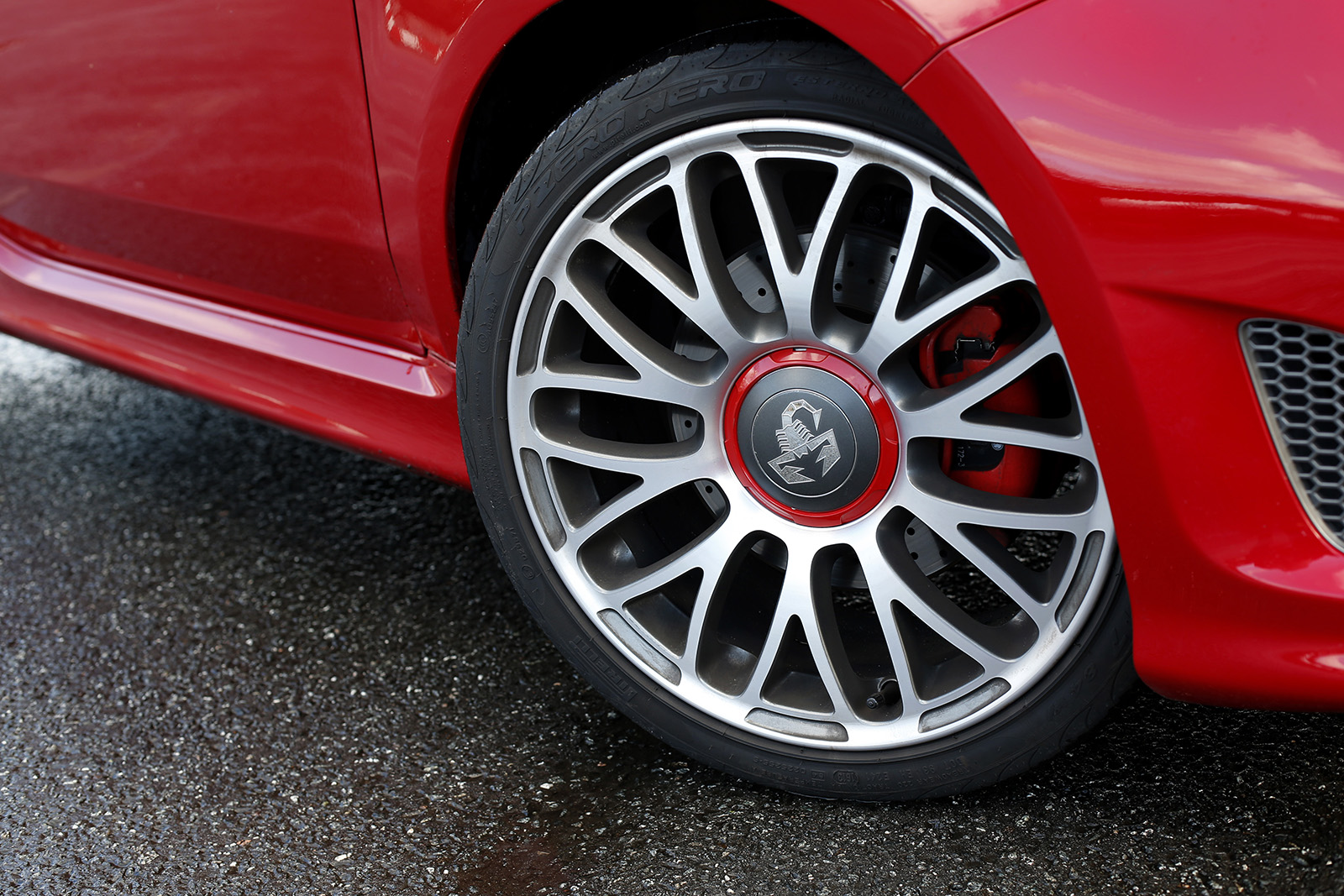The flamboyance of the 595’s two-tone exterior isn’t quite matched by its cabin. In here, there’s simply no concealing some of the chief limitations of this car. When you’re staring at the available passenger space, fitted equipment and material quality in the Abarth 595, you’d have to be very indulgent indeed not to question why a rational individual might spend £20,000 on one.
Abarth would argue that its customers aren’t rational but passionate, enthusiastic, indulgent individuals – and that the 595’s distinctiveness and charm take it a long way. Fair enough. But this is – on a fundamental level – an overdressed city car.
The slightly hard, plasticky fittings, the rough leathers on the controls, the dated-looking stereo and the ‘occasional’ rear seats wouldn’t offend at a lower price. But in a car costing four figures more than plenty of quite practical, better appointed, full-sized hot superminis, they’ll be obstacles for a great many buyers. As such the Competizione gets xenon headlights, dual-zone climate control, electrically adjustable door mirrors, rear parking sensors, Brembo brakes and Fiat's infotainment system complete with a 5.0in touchscreen display, DAB radio, Bluetooth and USB connectivity.
The 595’s driving position is high and the absence of reach adjustment on the steering column will make it trying for some. The secondary control ergonomics are likewise not brilliant.
You can’t get at the trip computer buttons easily because the wiper stalk is in the way – and you have to get at those buttons to turn the passenger airbag off, for example. We also found that Abarth’s metallic powder-finish trim for the fascia and seatbacks marked quite easily.
Counting in the car’s favour are Sabelt bucket seats that are comfortable and offer plenty of support, a high-mounted aluminium alloy gearlever that is a tactile highlight and a boost gauge cum shift indicator that adds a welcome bit of theatre.
You have to be stationary to pair your phone, and it takes a little longer than the average halt at traffic lights, annoyingly. Call quality when connected is only okay and the rudimentary menu screens make negotiating your call lists and phonebook a bit painful. For a £19k hot hatch, you’d expect better.
There’s no factory sat-nav system on the options list and no obvious integrated way to attach an aftermarket Garmin or TomTom. Abarth mentions preparation for TomTom nav as an option, but it wasn’t fitted to our car.
Buyers can also opt for an optional Interscope sound system, which adds a 100-watt subwoofer to the standard set-up, among other things. Sound quality is decent but nothing stellar.


